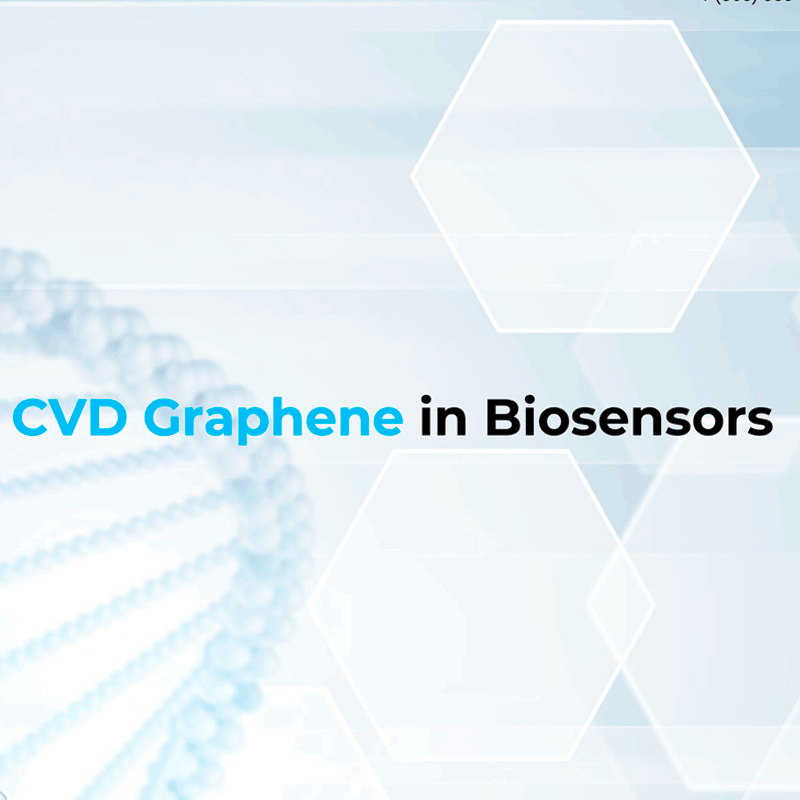In the above white paper, we analyze the operating mechanism and application potential of CVD graphene field-effect transistors (GFETs) in biosensors. We also present the latest advancements in our graphene production and graphene transfer processes that have played a significant role in making the economics of GFET-based biosensors viable for commercial development.
Why Is CVD Graphene Used In GFET Biosensors?
Graphene possesses several unique properties and features that make it a great fit to be used in FET-based biosensors. The properties and features include biocompatibility, large surface-to-volume ratio, near-limitless functionalization potential, and a high field-effect mobility.
Biosensors have two main components – a specific biological element (viruses, antigens, aptamers, glucose, etc.) being tested, and a transducer that creates an electrical signal in response to the biological element. GFET biosensors have gained traction due to their unprecedented sensitivity, multiplexing capabilities, wide functionalization potential, and low-cost structure. Biosensor devices made using GFETs are a convenient platform that provides a missing link for the digitization of healthcare.
Biosensors have shown application potential in fields such as point-of-care diagnostics, food safety, biotoxin detection, and drug discovery, to name a few.
Scalable and Cost-Effective CVD Graphene Production and Transfer
The third iteration of General Graphene’s CVD graphene production system – GG 3.0 – combined with its latest Roll-to-Roll Transfer System enables the development of large-area roll-to-roll CVD graphene polymer composites that can be utilized to develop GFET biosensors cost-effectively in mass volumes with consistent quality and performance. These advancements in graphene production and graphene transfer have enabled General Graphene to provide CVD graphene materials for GFET biosensor development at a highly reduced cost compared to traditional CVD tube furnaces and competitors.
The primary substrates of choice for GFET biosensor development include silicon wafers and polymeric substrates that have a moderate degree of chemical and thermal stability. Our experience working with partners in the biosensor field has enabled us to take on the part of the GFET development workflow and ensure that our customers are provided with industrial-scale CVD graphene at qualities tailored for their application, in mass volumes, and at significantly lower costs.
General Graphene is a pure-play CVD graphene foundry manufacturing large-area roll-to-roll CVD graphene films at its headquarters in Knoxville, TN. Incorporated with a singular focus on producing industrial-scale CVD graphene, General Graphene has remained application agnostic and leverages its graphene expertise to provide deep-dive application development to its partners across several industries.

